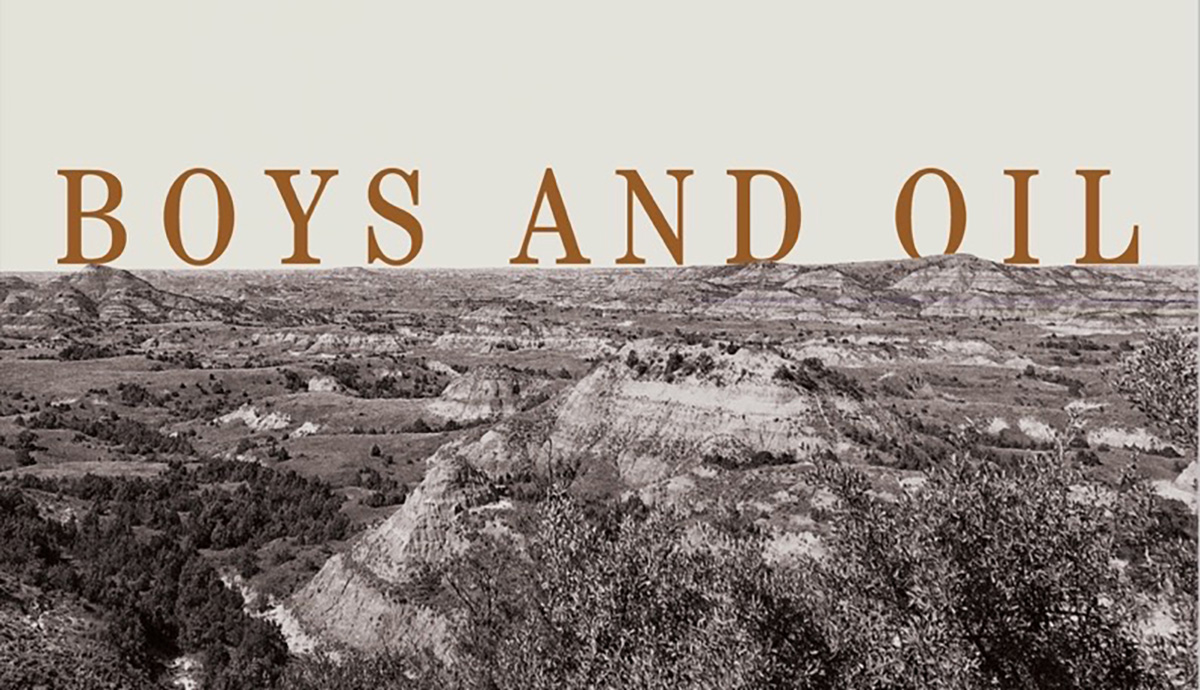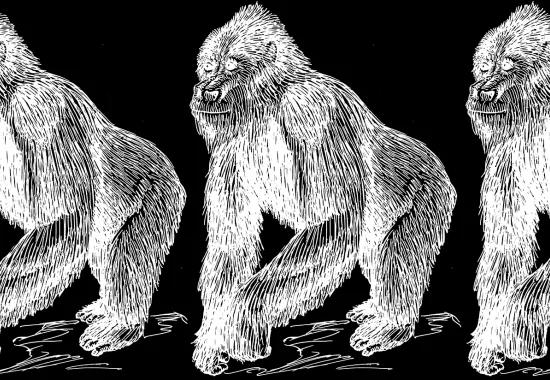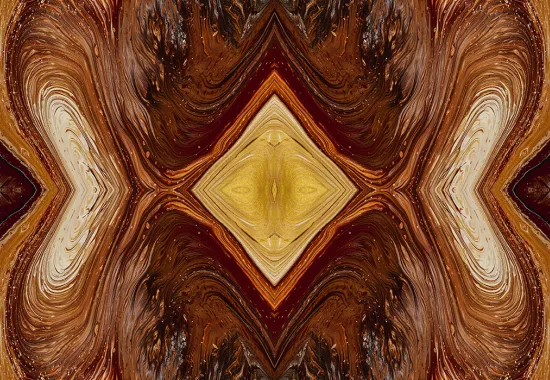The River of Imagination
One hundred eighty-three years to the night before my birth, the most important meeting in American history occurred. Nine miles north of my future hometown of Center, North Dakota, Lewis and Clark, in a tobacco-scented, fire-lit Mandan earth lodge met Sakakawea and her husband, the French-Canadian fur trapper Touissant Charbonneau.
At the time of Lewis and Clark’s arrival in late 1804, the population of the Mandan villages were estimated to be as large as St. Louis. After months of slogging up the Missouri River, oftentimes hauling the two pirogues and a large keelboat by rope, the Corps of Discovery, weighed down with peace medals, gunpowder, a chronometer, sextants, thermometers, rifles; presents for the Indians: brass kettles, needles, fishhooks, scissors; and, for the men, rum arrived and built Fort Mandan in October 1804 .
In childhood, each time we drove along or across the Missouri River I thought of William Clark, the red-headed captain, sent by Jefferson, the red-headed president, their hair, the color of mine, made some type of bond in my mind, a connection to exploration, to curiosity, and, to what I would later learn, conquest. I thought of Sakakawea often, the only woman on the journey—the woman, I had learned, without whom the Corps would not have received horses in present-day Montana, and without whom, surely, the expedition would have failed.
Lewis and Clark’s Corps of Discovery expedition highlights that world events impacted my home bioregion. Due to Napoleon Bonaparte’s renewed interest in beginning war—again—with England, he sold the vast Louisiana section of the middle of the continent to the United States in 1803. And because President Jefferson was curious about the large tract of wilderness beyond the Mississippi River, Lewis and Clark were summoned to lead the westward expedition.
Lewis, then twenty-nine, was thought by Jefferson to be “brave, prudent, habituated to the woods, and familiar with Indian manners and character.” Both Clark, who was described as a courageous, red-headed six-footer with a direct way of speaking, and Lewis were landed gentry.
In the spring of 1805, after a winter of hospitality and generosity from the Mandan people, Lewis and Clark, the Corps of Discovery, Charbonneau, Sakakawea, and their two-month-old son, Jean Baptiste, nicknamed Little Pomp, continued north and west on the Missouri River. On April 29th, Lewis spotted, and killed, his first small grizzly bear near the modern day confluence of the Yellowstone and Missouri River. In childhood, I never learned that the grizzly bears once lived as far east as my home.
It seemed, in childhood, and now, still, that Sakakawea, Lewis and Clark, the Corps of Discovery swirled in my imagination more than any other group of people—the mystery of seeing a pronghorn for the first time, of what lay around the next bend in the river, kept me rapt in wonder. What must it have been like to encounter new people, document flowers and animals new to science? How lonely must the journey have been, so far away from home?
I wondered. I still do. And that wonder has lead me to writing.
For a large portion of my early life I did not know that literary writers still existed. I knew of Mary Higgins Clark and Danielle Steele because my mother read their books; I knew the scariness of Stephen King because my sister devoured his work. Certainly I knew that books of history were being written—after all, there’s more history with each passing day. But in my early education in the small town of Center—population six hundred—I effectively thought everything that had mattered, that was worth writing about—the great ideas, emotions, and stories—had already been written. Writers, it seemed, were some type of fossilized relic—and this fact about my home region and me—myself—comes down to the issue of perception and sight.
If we do not have models—or such professions, like writing, are not talked about in our small worlds—then we do not have what’s possible before us. Beyond being hobbies, writing and the creation of art, in general, were not talked about in my childhood home. I drew and painted with pastels in my former toy-made-art room, and I painted and drew in the wheat field beyond the chokecherry trees in our backyard—but I never thought about being a painter, being an artist. Such professions—because they didn’t exist where I came from—weren’t viable, weren’t practical, weren’t options as far as I could see in Center, a town rimmed by large cattle ranches and anchored by a coal mine and coal-fired power plant.
But my mother’s family is full of storytellers. A large Germans-from-Russia family, the Hatzenbihlers speak about people long dead as if they’ve just left the room. “Uncle Pete always said to eat dessert first—it makes the rest of supper taste better.” Or: “Remember the time Uncle Sadie and Uncle Frank shot bottle rockets at each other from pickup trucks and we covered our ears and screamed in the back seats?” Stories thread through the fabric of my family.
Once, while accompanying him on my bend of the Missouri River, Grandpa Hatzenbihler sent the first of what would ultimately become three of his pickup trucks into the Big Muddy.
At four, I stood on the gravely river bank, wrapped in my yellow-and-orange lifejacket, topped with a wide-brimmed bucket hat. After Grandpa backed the boat off of the boat trailer and into the river channel, there was a loud bang. I gripped my lifejacket and jumped. Grandpa hollered, “Holey moley!” and pushed his hat farther up on his head. My eyes bulged like a goldfish out of water as the boat trailer barreled into the river—then the truck churned a wall of green-brown water before going downstream, submerging like a bobber. Grandpa cruised toward me, landed, and anchored the boat on shore.
“Taylor, remove your hat and place your hand over your heart,” Grandpa said before he began to sing. “Eternal Father, strong to save, whose arm hath bound the restless wave…” He sang the entire Navy Hymn.
When he finished, bewildered, I asked, “But, Grandpa, how will we get home?”
He took my hand and we began to walk up the boat ramp towards the highway. “Oh, don’t worry,” he said. “Someone will give us a lift; after all, you’re cute.”
•
At my writing desk in my farmhouse in Upstate New York, I can see a dead spruce tree, stripped bare, bleached bone white, where two eagles sometimes roost. I’ve named the eagles Sin and Damnation. When the writing feels forced or laborious, I look at Sin and Damnation and close my eyes, and I then go back home, back to that particular bend in the river where Sakakawea met Lewis and Clark, where Grandpa Hatzenbihler sank his trucks.
The Missouri is the river of my imagination. Cottonwood leaves shimmer like silver coins along the banks of the Big Muddy. In shallow water pools on sandbars, tadpoles jolt as their tails begin to shrink and eventually disappear as they prepare to leave the water. Bald eagles scan the river. Below the surface, the seventy million year-old pallid sturgeon, what the North Dakota Game and Fish Department calls the “least sexy fish in North America” sucks zooplankton and small minnows through its vacuum mouth. In childhood, I’d run through the great bowl depressions left from the Mandan’s now-vanished earth lodges.
Fifty miles downstream from this bend in the river is Fort Abraham Lincoln, the last home of the blonde, recently-trimmed short-haired George Armstrong Custer and his Seventh Cavalry. Before meeting his end at the Battle of Greasy Grass, Custer, I learned on a childhood field trip, kept a pet bobcat in the cellar of his house.
One hundred miles to the west of my bend in the river is the Elkhorn Ranch, commonly called the Cradle of Conservation. In 1884 on Valentine’s Day, Theodore Roosevelt lost his mother and wife in the same house on the same day. A sharp black ex fills his diary that day and seven words make-up the entire declarative entry: "The light has gone out from my life." Roosevelt then headed west to Dakota Territory, felled cottonwood trees, mourned among starlings and godwits, and ranched. It is here, at the Elkhorn Ranch, where his environmental ethic blossomed.
And it is here, in this region, where my imagination flourishes.
In 2013, I co-taught creative writing classes in communities impacted by the Bakken oil boom.
My home, the land I love, is now visible from space due to the flaring of natural gas; it gives off more light pollution than the Twin Cities of Minneapolis-St. Paul. It is here where a one-bedroom apartment can still fetch $2,200/month, where milk costs six dollars a gallon, where you can buy t-shirts that say, “Frack that hole,” and “Going deep and pumping hard,” or blaze-orange hats that read “Big Cock Country,” where metal testicles swing from trailer hitches, where you can order the Bakken’s “breast” coffee from the bubblegum pink Bakken Babe’s Coffee hut, where 95 percent of the 1.3 million acres of National Grasslands is open for oil and gas development, where an oil refinery is slated to be built three miles from Theodore Roosevelt National Park, where fewer sage grouse appear, their ceremonial mating leks disappearing from the development of more oil well pads, where fewer pronghorn antelope exist, where towns like Williston and Dickinson have doubled in size in less than a decade, where more Native American women disappear, the number not known, because America doesn’t keep count of missing Native peoples, where radioactive filter socks, the byproduct of hydraulic fracking, are discovered in abandoned farms, dilapidated gas stations, where fewer godwits nest, where more oil, chemical, and saltwater spills sterilize the land, flow into the Missouri River, render it radioactive.
Somewhere in Yeats’s journals it says, “things reveal themselves passing away.” There are stories we are told and stories that line shadow spaces. The stories I knew were that Lewis and Clark saw their first grizzly bear in North Dakota, that they sent a live prairie dog back to President Jefferson, that the Missouri River was dammed to provide hydroelectric power throughout the Great Plains. The stories I didn’t know until later: A thousand miles beyond the bend in the Missouri, when debating which side of the Columbia River to build Fort Clatsop, Lewis and Clark put it to a vote. York, Clark’s slave, and Sakakawea participated, marking the first time in this country’s history a black man’s—much less a slave’s—and a Native American woman’s vote counted as equal to a white man’s. I never learned that near the confluence of the Missouri and Yellowstone rivers, at Fort Buford, Sitting Bull surrendered his rifle, that the damming of the Missouri River was designed to flood Native American agricultural land, that Alfred A. Sully was ordered by “honest” Abe Lincoln to murder 150 Lakota, Dakota, and Nakota peoples one hundred miles from my bend in the Missouri River, that my family, as recent immigrants, benefited from the largest genocide in human history with the creation of the Homestead Act and reservation system for Native Americans.
These shadow stories are a writer’s responsibility, and they are a way to confront the major myths of our time. It is through this examination that we better understand the un-greatness of our country; we better understand its humanity and its fallibility. Upon closer examination, we understand we cannot whitewash these stories. We understand better, too, how to confront stories about supposed “success.”
The most important essay to my life appears in a slim book, Grassroots: The Universe of Home, by Paul Gruchow. The essay “What We Teach Rural Children” details the decline of family farming in rural America. Gruchow traces the agricultural history of the 20th Century and lineates the replacement of people with machines: “We have been clearing the human trash out of farming. We have been making the countryside safe for machines.”
When I read Gruchow, I think of the large farms and ranches near Center, North Dakota. A thousand acre operation is considered small. How could you make enough money off of that little land, people would often ask. I wondered, too, in childhood, why anyone would farm—you could never travel, had to work long hours, had to smell hogs or cows or horses, and you got dirty. Who the hell would want to do any of that?
Midway through the essay, Gruchow writes: “These are lessons we teach our rural children today: that their parents were expendable and that their duty is to abandon their dreams and to become cogs in the industrial machine.”
Here is another message we give them, in ways both subtle and direct: if they expect to amount to anything, they had better leave home. The truth is, the future we are preparing for ourselves in rural America does not include a place for ambitious young men and women. A friend of mine who teaches at a rural university says that the institution ought frankly to offer a class called “How to Migrate.”
“How to migrate” is a euphemism for success. And in our newspapers, our nightly news episodes, our radio-programming, and even in our literature, we like successful people. In falling into this trap, into this type of narrative, in chasing supposed success, my life has taken me far from my home. I now live over fifteen hundred miles from my bend in the river.
David Orr writes in his still-relevant book, Earth in Mind: “The plain fact is that the planet does not need more successful people. But it does desperately need more peacemakers, healers, restorers, storytellers, and lovers of every kind. It needs people who live well in their places. It needs people of moral courage willing to join the fight to make the world habitable and humane. And these qualities have little to do with success as our culture has defined it.”
It is by sharing shadow stories—highlighting institutionalized racism, queerphobia, ableist rhetoric—that we get closer to the elephantine, worn-out myth of our time: the story of the supposed success of industrial capitalism. By confronting the myth of capitalism’s success in my own storytelling, I am better able to see that my own family has made its money by unmaking the world, benefiting from the destruction of brown-skinned people—and, yet, too, were victims of free market economics, sacrificing their bodies to strip coal, pump oil, and pull gas from the ground.
The problem with the story of capitalism is that it doesn’t work; it makes victims of us all, and it begins with the destruction of the least-privileged first—brown-skinned people, poor people, disabled people, rural people. History reveals killing, enslavement, forced migration, the creation of reservations, the clear-cutting of prairie and forests, casting the mountains into the valleys, salting the land, chemicalizing the air, monoculturing the fields. Industrial capitalism’s logical outcome is human irrelevance.
It is a bad, fucked-up, boring story.
We are now in the bottleneck of human storytelling. The literal habitability of the planet for our species hangs in the balance. Many of our friends—the great auk, the western black rhinoceros, Caribbean monk seal, Pinta Island tortoise, Steller’s sea cow, baiji, the golden toad are now gone forever. I worry that I will have to say good-bye to the sage grouse and pallid sturgeon.
I have, though, been saying good-bye my entire life, ever since getting “educated,” ever since watching North Dakota get razed, grazed, pillaged, dammed, and fracked. It is through saying good-bye—even to people, animals, landscapes we love best—where imagination and creation enter, where our memories and dreams reside. It is by learning to say good-bye that we learn to remember.
The imagination is strong and it is resilient. Though the bottleneck we find ourselves in is narrow, the power of creation is great. This isn’t a silver lining to the biological catastrophe we now live in, it’s just reality. It is the work we are called to do: to envision the world as it could be, rather than the way it is. A good story can move the universe an inch.
In the act of creation there is no room for cynicism—after all, cynicism is the complete submission of the imagination to the status quo; it’s flabby, it’s lazy, and it, through a scrim of smoke, pretends to protect the cynic from the difficult, needed work ahead.
Perhaps what I mean to say is this: the sea is rising, the forests are burning, the ice is melting, ticks are multiplying, topsoil is eroding—there is no greater writing prompt than the time we live in now. It is by staring into the flames of the world that we can learn to tinge our words with fire, create new worlds as our very lives depend upon them because, after all, they do.
In 1804, the Mandan Indian Chief, Sheheke-Shote (who, in English, is called “White Coyote”) befriended Lewis and Clark and the men of the Corps of Discovery. His tribe supplied the explorers with corn, beans, and meat throughout the long winter. In his generosity, Sheheke-Shote told the explorers, “If we eat, you shall eat.”
A few weeks ago, I returned to my bend in the Missouri River, the bend where Sheheke-Shote befriended the Corps of Discovery, where his village, Mitutanka, remained before being abandoned in 1837 due to a smallpox plague that nearly annihilated the Mandan people.
In mid-March, great gleaming hunks of ice shimmered downstream in the chocolatey river. The cottonwoods looked as supple as veins against the gray skin of sky. Weeks earlier, UPA, a large block-like coal plant known as the “Stanton Station,” was razed. There was, finally, more river in view, a remnant of the fossil fuel economy had finally been removed.
Downstream from my bend, from where I watched the great ice floes, from where I still, at thirty-one, threw sticks in the river to watch how fast they’d move; the Missouri River swelled, flooding Nebraska, Iowa, and Missouri with radioactive water. Levees failed, cattle died, fields looks like bright shining mirrors, grain bins exploded.
We are now, as I speak, in a great unraveling—a time where food, this summer, will become more expensive, where the Missouri River is crying out, desperately pleading for us to reconsider our definitions of “success.” We are now in the thick, complicated story of climate change.
It is now when history comes speeding into the present. As the ice in the Missouri inevitably melts as it continues to flow south, as the river overtakes our human cleverness, I am reminded of the second part of what Sheheke-Shote said to the explorers: “If we starve, you must starve also.”
Recommended
Schizophrenic Sedona
Recense (realized)
Notes on Hands






